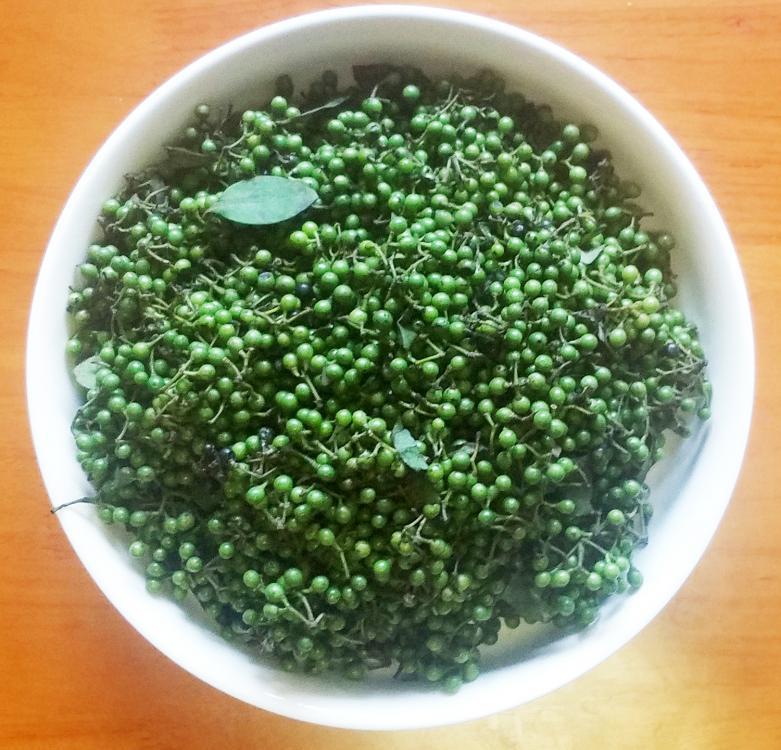Then we have what I call the condiment oils and flavoured oils. That is oils which are used in cooking, but as a flavour component rather than a cooking medium.
First and foremost is sesame oil (芝麻油 - zhī ma yóu or 香油 - xiāng yóu), one of the essential components of Chinese cuisine.
This is pressed from roasted sesame seeds and has a strong flavour. It is not used for frying in Chinese cuisine (the taste is too strong). Instead, it is used as a last minute addition to stir fries, a little being applied, off the heat, just before serving.
The oils valued for its flavour and aroma, both of which are highly volatile and are destroyed by heat. Many recipes call for it to be used in marinades for dishes which are then cooked at high heat. Follow these if you like throwing money away.
Sesame oil is widely available from supermarkets, market stalls and corner shops.
Oil from un-roasted sesame seeds, used for frying in southern India, seeds is not a suitable substitute for Chinese cuisine.
Now, from the ubiquitous to the rare. Bama county, a short distance to the west of Liuzhou, is home to members of the Yao ethnic minority, many of whom live extraordinarily long lives. One key ingredient in their cuisine is a soup made using hemp oil (大麻油 - dà ma yóu), which is none other than cannabis oil.
This soup is eaten twice a day. The oil can also be used in a dip.
Note that the oil contains merely trace amounts of Tetrahydrocannabinol (THC), the psychoactive substance found in the cannabis plant. It won't get you stoned! I know. I've tried.
Next up is the fiery essential in Sichuan cooking, chilli oil (辣椒油 - là jiāo yóu, or S:红油; T: 紅油 - hóng yóu, literally 'red oil'.).
This is made by steeping dried chilli flakes in peanut or corn oil for a few days. It is used in Sichuan hotpots and soups, dips and as a general condiment on stir fries etc. If you can, try to get a genuine Sichuan brand (红油 is the preferred name in Sichuan.) Again, chilli oil is widely available.
While we are in Sichuan, I should also mention prickly ash oil (花椒油 - huā jiāo yóu), made from regular red Sichuan peppercorns or sometimes vine pepper oil (藤椒油 - téng jiāo yóu) which uses the rarer green variety. This is another condiment oil.
It has that same tongue numbing characteristic as the peppercorns do. Again it is made by steeping the corns in peanut or corn oil. It too is used in hotpots, dips, and on stir fries. Reasonably easy to find in supermarkets, especially in hotpot season.
Yet another edible oil I've run into in Liuzhou is mustard oil (芥菜油 - jiè cài yóu). This is not at all common in Chinese cuisine (although it is in northern India and in Japan).
The bottle shown below is marked 日本风味 (rì běn fēng wèi, meaning Japanese flavour). The oil is pungently flavoured and doesn't match well with Chinese flavours. It is more often used as a skin treatments.
Finally, we have Litsea Oil, 山胡椒油 - shān hú jiāo yóu, or 木姜子油 - mù jiāng zǐ yóu.
Made using (Litsea cuceba (Lour.) Pers. ), (山胡椒 - shān hú jiāo, literally mountain pepper; or 木姜子 - mù jiāng zǐ, literally tree ginger seeds.

The seeds grow on small trees in Guizhou and Hunan provinces, as well as in Taiwan. The oil is distinctly lemon scented - like lemongrass - with notes of ginger and a mild pepperiness. The harvest begins in May and lasts all summer.
The oil is often used as a condiment. Fuchsia Dunlop notes in The Food of Sichuan that although it's not Sichuanese, people in the SE of the province like to use it in dips and on the cold dishes that cuisine is famous for.

Litsea seeds


.thumb.jpg.a6e7f966827f4a1e09524b83701a5e83.jpg)
.thumb.jpg.9410f6691159a08d127d59e591e8b012.jpg)
.thumb.jpg.0a0f6e7ebc2765b582a48e49304a2cf2.jpg)
.thumb.jpg.297d8e786aa26b0d2034c6e94c1d6698.jpg)
.thumb.jpg.0652788eaed6a78c2f749220bbffcc54.jpg)
.thumb.jpg.1403bc59b30479e15bc1dd2347d84715.jpg)